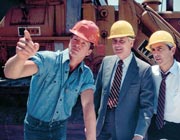 |
 |
 |
|
Coverage Concerns Building codes New codes require special coverage and attention to insurance limits By Roy C. McCormick Building codes, mandated by local government agencies to enforce safety requirements, have become an increasingly important issue for insurers and insureds, both pre-loss and post-loss. The codes specify the use of new types of construction materials and building techniques. They apply both to new structures and to the repair and rebuilding of existing structures. In the wake of severe losses, it became clear that insurance policy provisions did not cover the additional costs of construction mandated by these codes to the extent previously experienced. Insurers denied claims for the required additional costs, based on policy provisions, and their denials were affirmed by the courts. This problem was driven home in the aftermath of Hurricane Andrew, which virtually destroyed the Homestead Air Force Base, the city of Homestead and nearby south Florida property in 1993. Dade County, Florida, sued State Farm Insurance Company, seeking a summary judgment that the insurer’s replacement cost policies (and similar policies of other insurers) provided coverage for the expense of building code upgrades. Numerous insureds and their attorneys had claimed coverage under those policy provisions. The insurer appealed a judgment in favor of the county. Homeowners Special Form 3 contained two pertinent provisions. An ordinance or law clause stated that the insurer was not responsible for loss caused by enforcement of “any ordinance or law regulating the construction, repair or demolition of a building.” An increased cost limitation clause provided that the insurer “will not pay for increased costs resulting from enforcement of any ordinance or law regulating the construction, repair or demolition of a building.” Ambiguity debated The county argued that these provisions were ambiguous because the insurer had failed to define “enforcement” and “increased costs” in the policies. The appeals court did not agree. It said that failure to define a term in a policy “does not necessarily render the term ambiguous.” It should be given its ordinary meaning. The court concluded that the ordinary meanings of “enforcement” and “increased cost” made the coverage limitations “directly applicable to the scenarios at issue in this action.” The summary judgment in favor of the county was reversed and the case remanded for entry of judgment for the insurer. State Farm Fire and Casualty Company, Appellant v. Metropolitan Dade County et al., Appellees. Florida District Court of Appeal, Third District, No. 94-81. May 3, 1994. Further particulars may be found at Commerce Clearing House (CCH) 1994 Fire and Casualty Cases, Paragraph 4749. Insurers reacted to the new exposure by drafting optional endorsements, subject to additional premium and specified limits of coverage. Ordinance or law coverage endorsements allowed (and still allow) an insured to apply a stated amount or percentage of Coverage A and Coverage B to the increased replacement or repair costs of covered structures mandated by local laws or ordinances. Numerous homeowners insureds did not choose the optional endorsement protection but did experience loss and expense that would have been covered had they done so. To their credit, many insurers adopted modified homeowners forms that included a reasonable amount of “built-in” protection arising from compliance with laws or ordinances applicable to the building or repair of structures. Endorsements continue to play an important role in insurance for these law and ordinance requirements. For example, ISO’s Ordinance or Law Coverage Endorsement HO 04 77 may be used to cover contingent liability due to building requirements. Loss is settled on the basis of any ordinance or law regulating the construction, repair or demolition of a covered structure. The endorsement coverage is an additional amount of insurance; its use does not affect the limit specified for Dwelling Coverage A. When made applicable, AAIS Ordinance or Law Endorsement ML-257 replaces the policy’s incidental coverage for the exposure. Instead of limiting coverage to the “built-in” amount, the insured may apply any amount to cover the increased expense. If the increased cost plus the covered loss amount exceeds the applicable insurance limit, an additional 10% of the limit is availab1e to cover any increased cost. Commercial coverage changes Commercial property, too, is subject to the requirements of ordinances and laws. As they have for homeowners, insurers have addressed the problem. Needed coverage has been made available for commercial and other non-residential risks in general. Because of their widespread use, we will focus on businessowners (package) policies with respect to their “built-in” and optional coverages for the exposure. Current businessowners policies written by major companies include a limit of $10,000 for the costs involved to “meet code” in repair or replacement of a covered structure damaged by an insured cause of loss. (A previous “built-in” limitation of $5,000 may still be applicable in some policies.) The limit is a maximum amount whether one structure is specifically insured or more than one is covered on a blanket basis. It is important to check a policy’s limit. Costs of reconstruction and new construction have skyrocketed; accordingly, insurers offer additional protection by endorsement for the building code requirements. For example, Ordinance or Law Coverage Endorsement BP 04 46 is optional in ISO’s Businessowners Program. BP 0321, Ordinance or Law Extension, is available for additional protection under the AAIS Businessowners Program. Many home owners and business owners are not familiar with building ordinance and law requirements and the needed amount of insurance pro-tection. Informed insurance providers can be of great help to them. * The author |
|
|||||||||||||
| ||||||||||||||
